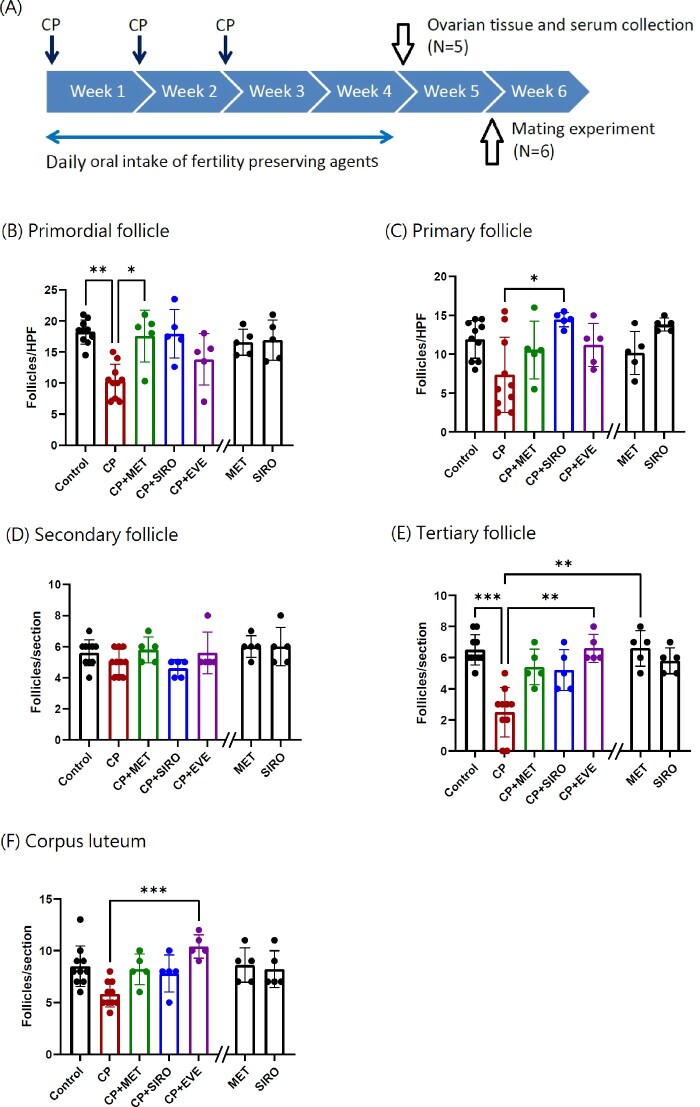Figure 1.
The timeline of experiments and the number of ovarian follicles in different stages in each group. (A) The timeline of experiments was shown. Metformin (MET), sirolimus (SIRO) and everolimus (EVE) were administered by gavage on Days 1 to 5 for 4 weeks. Cyclophosphamide (CP) was provided after gavage on Day 1 by intraperitoneal injection weekly for 3 weeks. Other experimental details were described in Materials and methods section. (B–F) The numbers of ovarian follicles in different stages during folliculogenesis in C57BL/6 mice are shown. The mice were treated with CP-alone, MET-alone, SIRO-alone, or CP in combination with MET, SIRO or EVE. After 4 weeks of treatment, the ovaries were processed into paraffin blocks, sectioned, mounted and hematoxylin and eosin (H&E) stained for follicular counting. The number of primordial and tertiary follicles, and corpus luteum decreased in the CP-alone group compared with the control group (P = 0.0014, 0.00003, 0.073, respectively). The deleterious effects of CP on follicular counts were diminished when oral MET was given to mice (Primordial follicle: P = 0.0274). The other two specific mTOR inhibitors, SIRO and EVE, also exhibited significant protective effects against CP damage (primary follicles: CP-alone versus CP + SIRO: P = 0.024; tertiary follicles: CP-alone versus CP + EVE: P = 0.0046). (B) and (C) The Y axis represented the average follicular counts per high-power field (HPF). N = 10 mice in the control and CP-alone group, while n = 5 mice in the other groups. Each value represents the average of 2–3 HPF per animal. (D)–(F) The Y axis represented the total follicular counts per ovarian section. N = 10 mice in the control and CP-alone group, while n = 5 mice in the other groups. Data are expressed as the mean ± standard deviation. Statistical analyses were performed by nonparametric Kruskal–Wallis test with Dunn's post-hoc for multiple comparisons. *P < 0.05, **P < 0.01, ***P < 0.001. Note: The double slash mark on the X axis separated the MET-alone and SIRO-alone group from other groups because these two control groups were run in a separate experiment.

